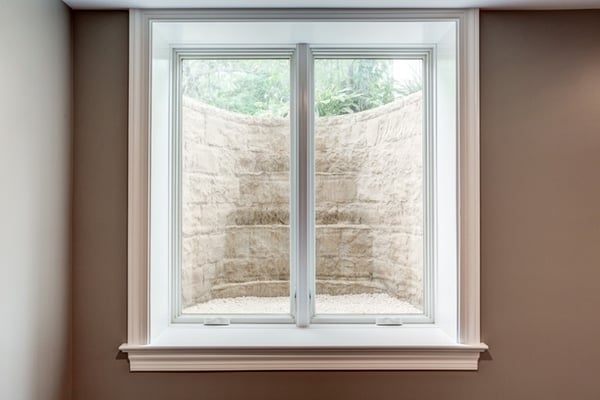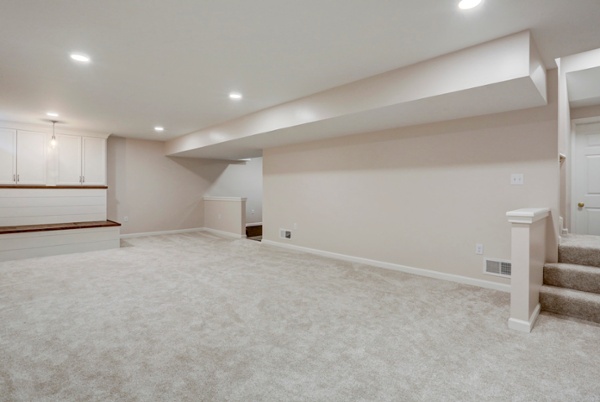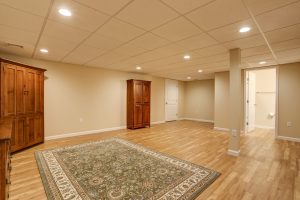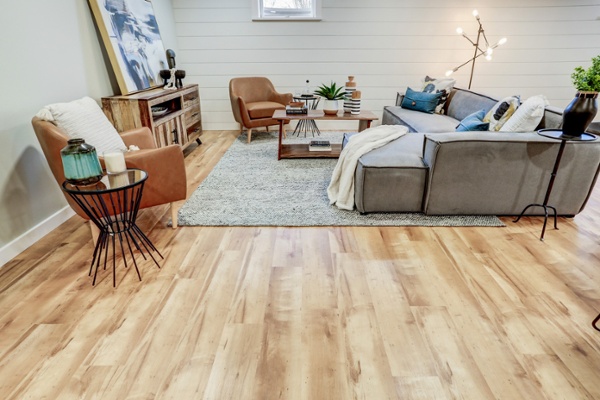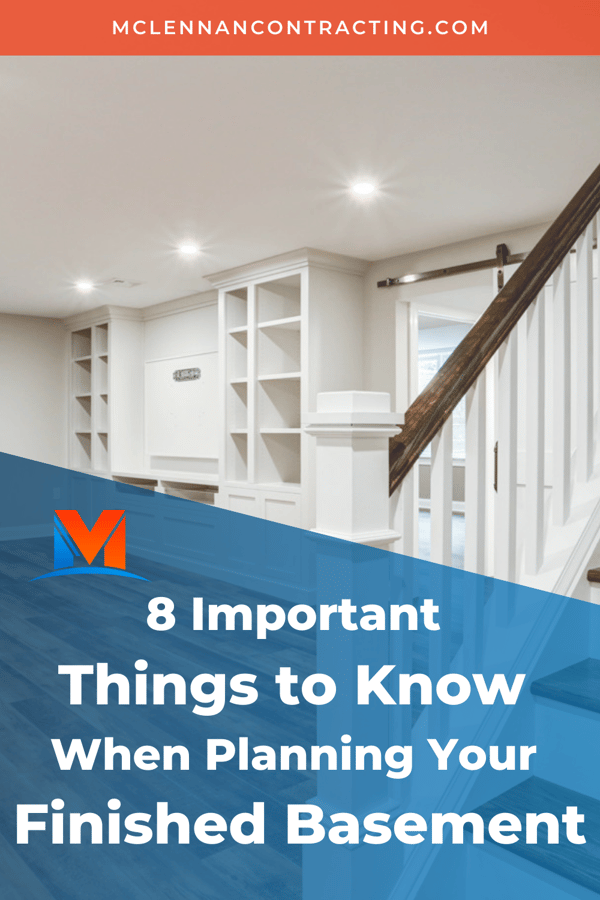6 min read
8 Important Things to Know When Finishing Your Basement in Lancaster
By: Alison | June 14, 2022
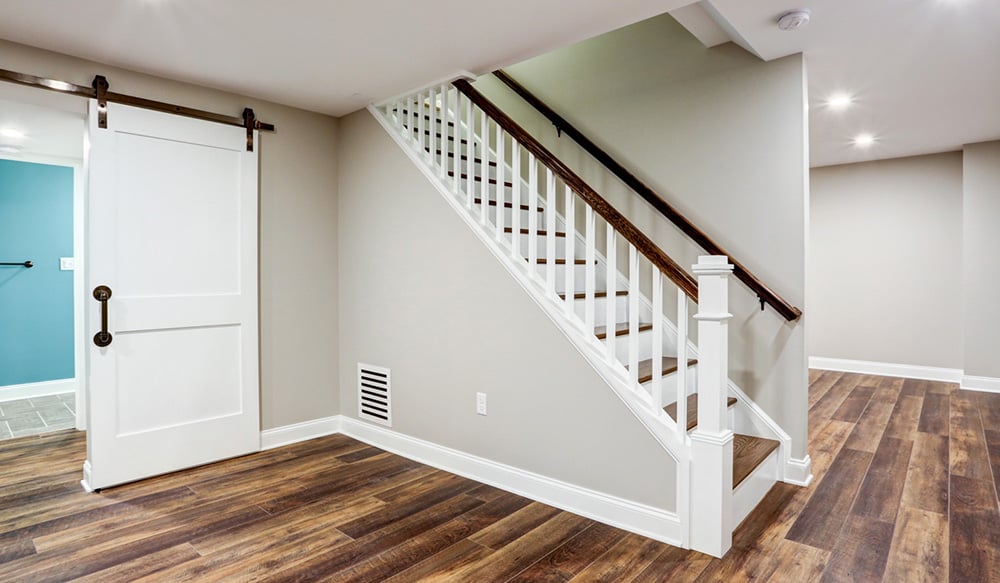
Is your Lancaster basement full of untapped potential? When well-designed, a basement remodel can create a cozy retreat in frosty winter months and a cool reprieve during the humid dog days of summer.
But how do you plan a basement remodeling project? What goes into creating the ideal basement sanctuary, one that effectively addresses the unique challenges of a below-grade space?
Technical Considerations for Basement Remodeling
Moisture Control & Waterproofing
If a basement has active water problems, before finishing the space, water must be stopped from the outside with proper drainage from your roof and grading, or controlled and managed from the inside using waterproofing membranes or interior perimeter drains. Even seemingly dry basements should have a moisture barrier installed on top of the existing exterior basement walls before the interior walls are assembled.
Bottom line: The correct materials, installed in the correct order, are essential to safeguarding your finished basement from long-term moisture and mold issues.
Code Requirements
Building codes related to Lancaster basement remodels are always in flux, and can vary drastically even between neighboring municipalities. You’ll save yourself lots of research (and potential headaches) by hiring a Lancaster contractor who is well-versed in current basement finishing codes and can answer questions such as:
- Do you need an egress window if the finished basement doesn’t include a bedroom?
- Is the head clearance of the existing stairwell high enough?
- How might your basement flooring impact the electrical requirements of the space? (Strange as it sounds, it can.)
Access to Utilities
Before jumping into design, it’s important to consider any utilities stored in your basement. All mechanical elements that have serviceable connections (clean-outs, shut-off valves, junction boxes, etc.) must be provided proper access, and clearances must meet code requirements. That isn’t to say utilities have to be a visible element in your basement design. Talk to your basement finishing contractor about how utilities and access locations can be concealed in the space.

Design Considerations for Basement Remodeling
Layout
Layout is impacted by two things: (1) how you intend to use the space, and (2) the existing conditions you have to work with. Depending on your budget and existing conditions, you might have options that include relocating posts, modifying the stairway, or shifting utilities. Whether these alterations are necessary or worthwhile will largely depend on the intended purpose of your finished basement.
Egress Window + Well
Lancaster building codes may (or may not) require an egress window in your finished basement, which must be large enough for a firefighter to enter and occupants to escape. These windows range in style from utilitarian to stylish, but the finished aesthetic is perhaps most impacted by choice of window well. If you must install an egress window, consider skipping the base-level corrugated metal window well and invest in one made of fiberglass or faux-stone material for an upgraded view.
Lighting
In a below-grade space, light is a precious commodity. Is your finished basement going to be a rec room? A dedicated craft space? Or are you creating the warm, cozy atmosphere of a downstairs living room? Whatever purpose and style you’re aiming for with your basement remodel, don’t skimp on adequate lighting.
Egress and hopper windows help with natural light, but light fixtures are the primary source of illumination in most finished basements. Recessed can lights are popular and effective, but wall sconces can provide charm and ambiance. Consider fixtures that are not just functional, but also contribute to the atmosphere you want to enjoy in your finished space.
Ceiling
The highest level of your basement ceiling will be the same as the lowest hanging pipe, duct, or wire. How your ceiling is finished will be influenced by where these items are located, and the degree of accessibility you want to preserve.
Drop ceilings are a popular choice because they provide the best accessibility, but there are very few elements in a basement ceiling that are not also present in the ceiling between a first and second floor. In other words, accessibility might not be as paramount as it seems. Drywall, while not strong on accessibility, is an alternative that provides a clean, finished look to your basement remodel. It can also be more cost effective than decorative drop ceiling tiles.
This finished basement has a Drywall ceiling.
This finished basement has a drop ceiling.
Flooring
When helping you choose a flooring product for your basement, your basement contractor will likely consider when the home was built. Age of construction determines subsurface material, composition of concrete, moisture barriers, perimeter drains, and radon mitigation – all of which impact flooring options.
With these factors in mind, your contractor can help recommend flooring that will handle your basement’s temperature fluctuations and degree of ground humidity, while contributing to the overall aesthetic you want in your finished space.
How Much Does It Cost to Remodel a Basement in Lancaster?
Not surprisingly, with all the variables and considerations of a basement remodel, it's hard to talk about basement remodeling costs in terms of averages. The best way to approach this topic is to first ask yourself how you'll be using your finished basement.
To help you plan your basement remodeling project, we've created a Lancaster Home Remodeling Cost Guide that walks you through common uses of a finished basement and the general cost ranges associated with each.
A basement remodel can greatly enhance your home’s function and enjoyability. The key is how to plan a basement remodeling project that addresses your space’s unique technical needs while creating an atmosphere that enriches your family’s at-home experience.
Want to learn more? Check out our gallery of Lancaster basement remodels to get inspiration and begin gathering ideas for your own project. And when you're ready, we'd love to chat with you about your vision with a free consultation. Happy planning!



